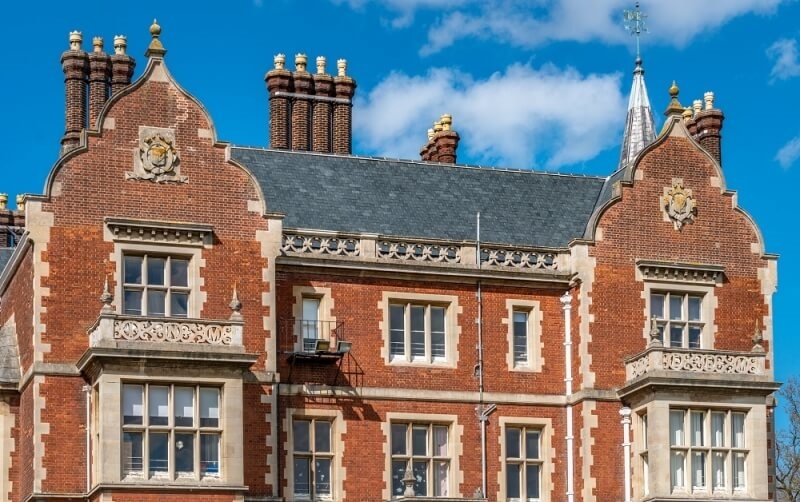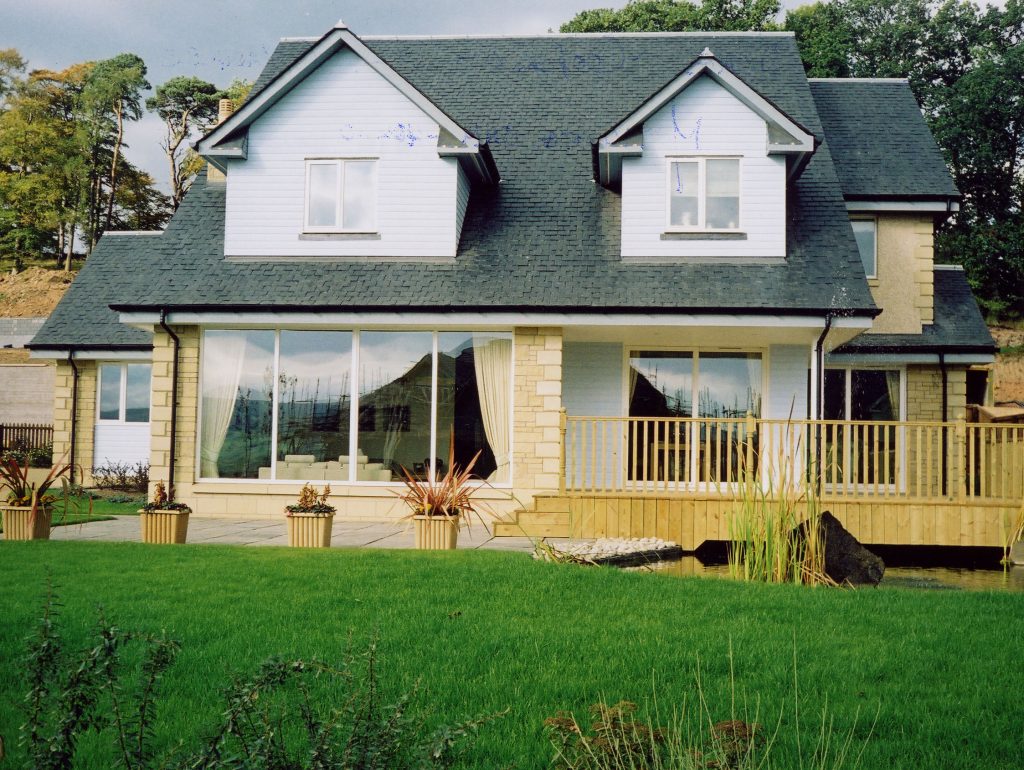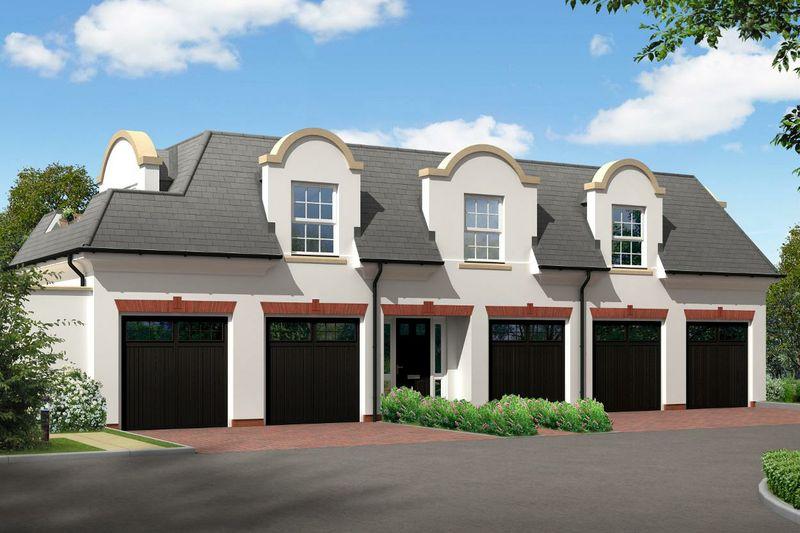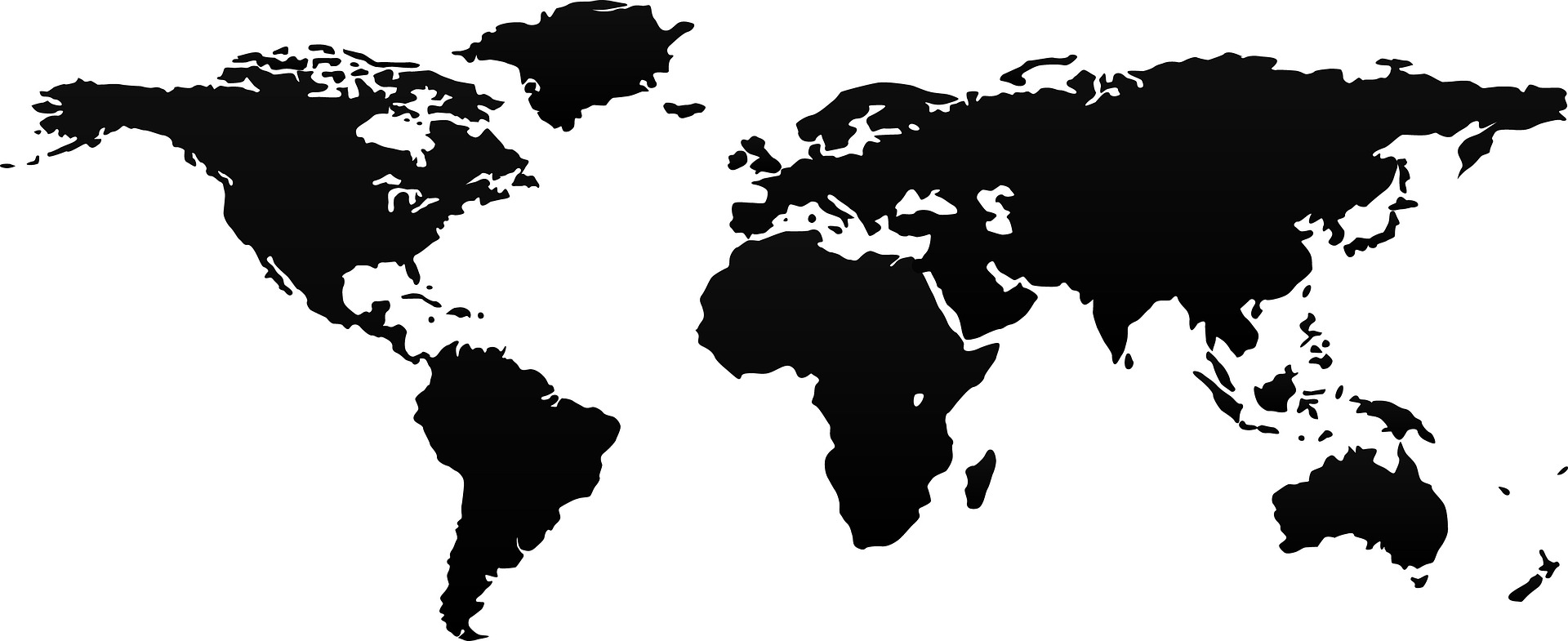Sustainably sourced natural slate products
At SSQ, we take our environmental responsibility extremely seriously. Our mining and slate production processes are designed to limit environmental impact and reduce any associated carbon emissions. Sustainability is at the heart of what we do, and we always ensure that our activities adhere to our founding principles. At SSQ we:
- • Only work with quarries who share our commitment to using environmentally friendly methods
- • Strive to reduce waste material production wherever possible
- • Minimise transport emissions through well-planned logistical networks
- • Ensure all SSQ employees are trained in the latest environmental protection practices
- • Promote transparent working by allowing public access to our environmental policies
- • Endorse the concept of reducing our environmental footprint
Material comparison
At SSQ, we have spent decades researching and developing our slate production processes. SSQ slate such as Spanish Slates, has some of the lowest levels of embodied carbon of any construction material. When compared to other roofing materials, slate has by far the lowest carbon footprint. In terms of CO² emissions, the most popular roofing materials differ significantly.
| Material | CO² emissions per kilo |
| Slate | 0.005 |
| Concrete | 0.19 |
| Clay | 0.43 |
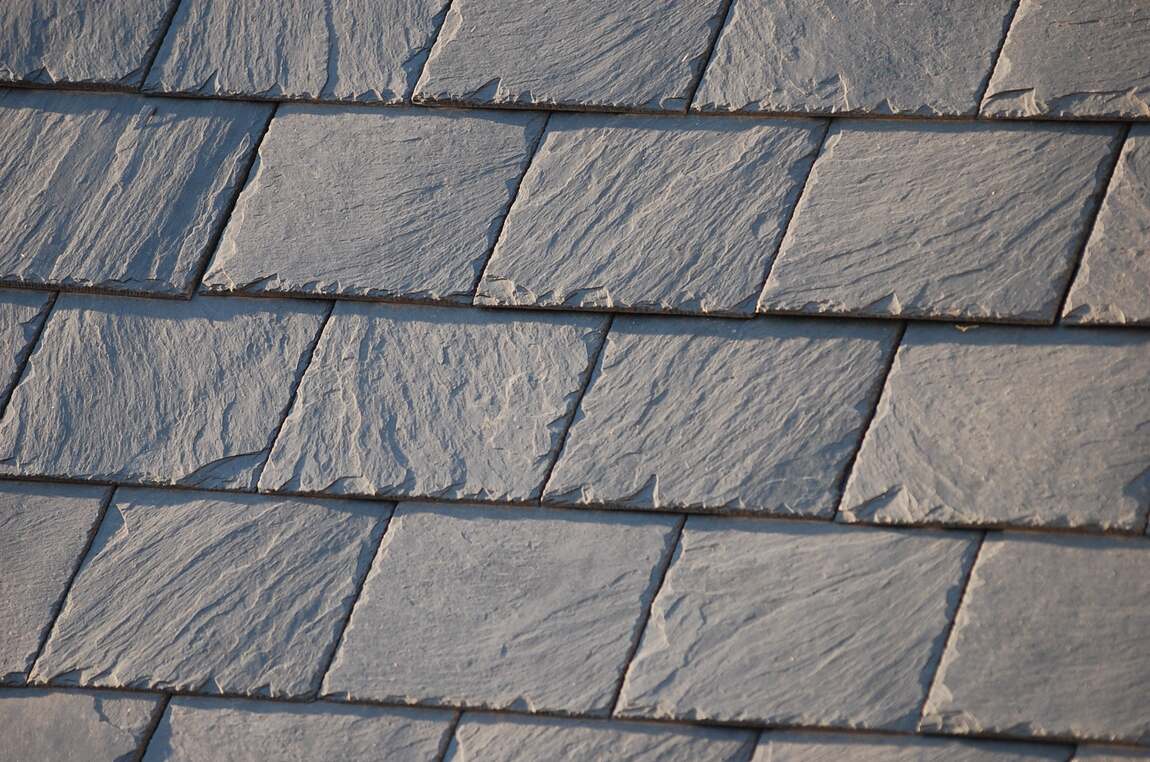
Environmentally friendly production
When compared to other roofing materials, natural slate requires very little processing. Low power electric diamond cutters are used to quarry the material with much of the slate splitting still done by hand. Although quarrying natural slate does have an impact on the natural environment, it is nowhere near as damaging as the kilns used to process clay tiles or the chemicals involved in concrete production.
Once deplete of resources SSQ slate quarries are often used for outdoor pursuits such as rock climbing and lake diving. Any waste materials or off-cuts can also be used as slate chippings for driveways or patio areas or as crazy paving. This focus on limiting environmental impact in innovative ways makes slate an industry leading material in the fight against climate change.
Contact usSSQ sustainability accreditations
Third-party accreditations help our customers to understand our commitment to sustainability. They ensure that we are continuously striving to find new and better ways of producing building materials with as little environmental impact as possible.
At SSQ, we have a gold standard Carbon offset certificate for our work with the East Africa Borehole Project, and are currently in the process of being added to the BREEAM green book. We also have the ISO 14001 environmental standards certification for our main partners in Spain.
Contact us
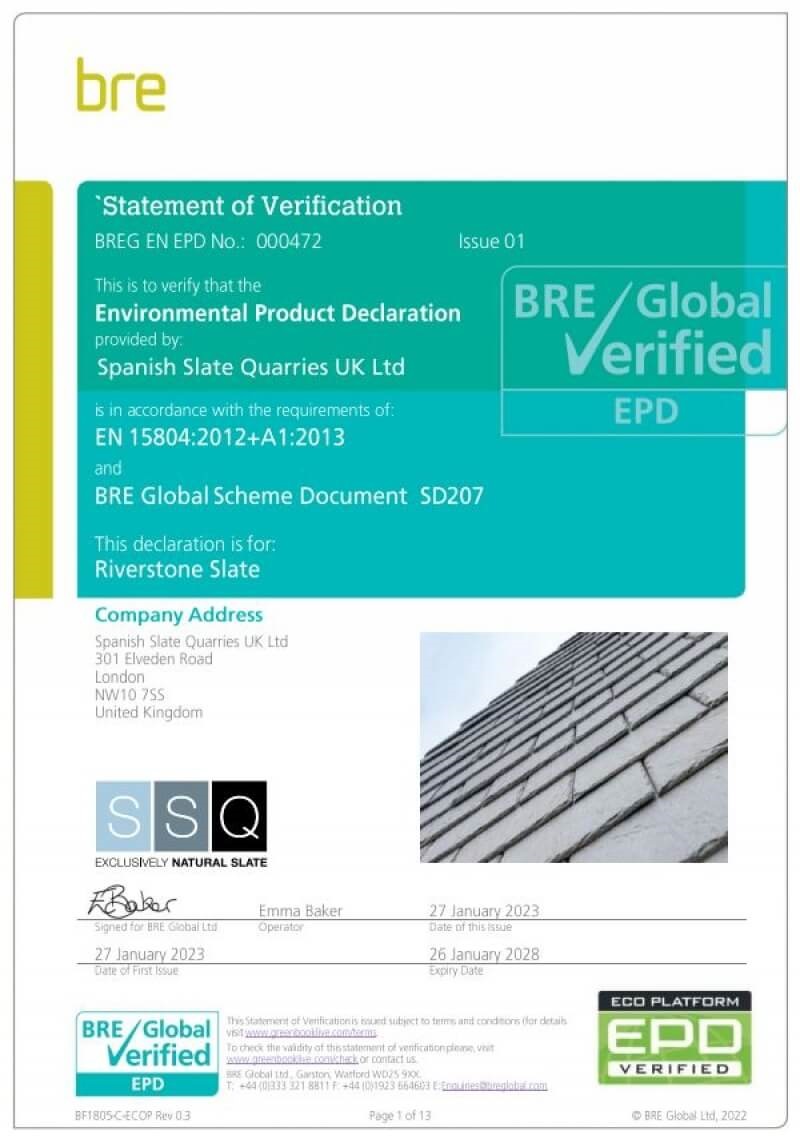
SSQ are BRE Global Verified
SSQ Riverstone slate has received a statement of verification from BRE Global Limited. This accreditation is in accordance with the requirements of EN 15804:2012+A1:2013. It verifies that the Environmental Declaration provided by SSQ is in accordance with the above legislation and also meets the requirements of the BRE Global Scheme Document SD207.
This accreditation covers the life cycle of Riverstone slates from their extraction in the Riverstone quarry through transportation, cutting, packaging, delivery, and installation. The stringent guidelines used by BRE Global Limited ensure that all Riverstone slates are produced with a focus on reducing environmental impact at all stages.
Contact usLongevity and weather performance
One of the most important sustainability considerations is the life expectancy of a building material. Roof replacements and repairs create carbon emissions which impact the environment, so the longer a material lasts, the better its green credentials. On average, natural slate can last more than three times longer than other roofing materials. That’s over 100 years, and in many cases, longer than the life expectancy of the building on which it’s installed.
Finally, natural slate has outstanding weather resistance capacity. It is extremely resistance against heat, wind, rain, snow, and ice and can withstand some of the harshest weather conditions in the world. When independently tested for its environmental impact, natural slate scored the highest overall Green Rating of ‘A’ under BREEAM assessment testing criteria.
Contact us